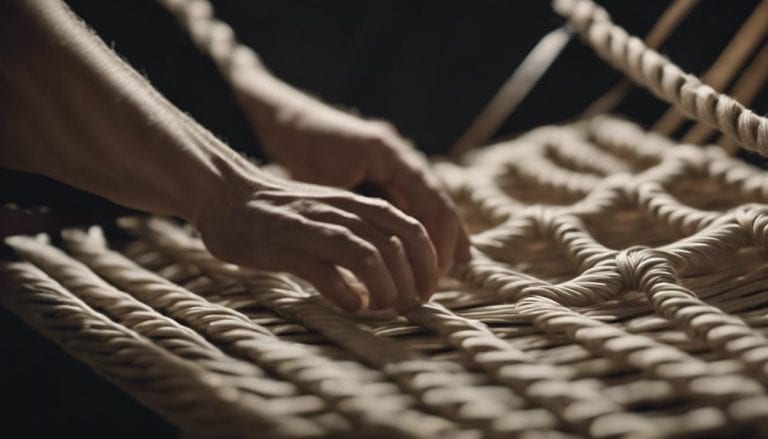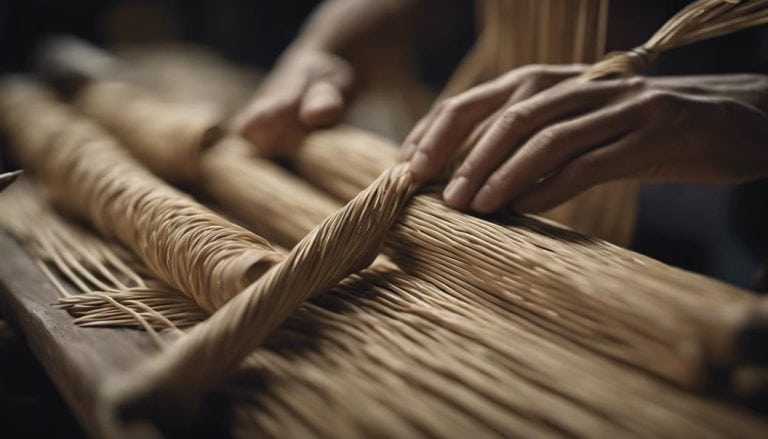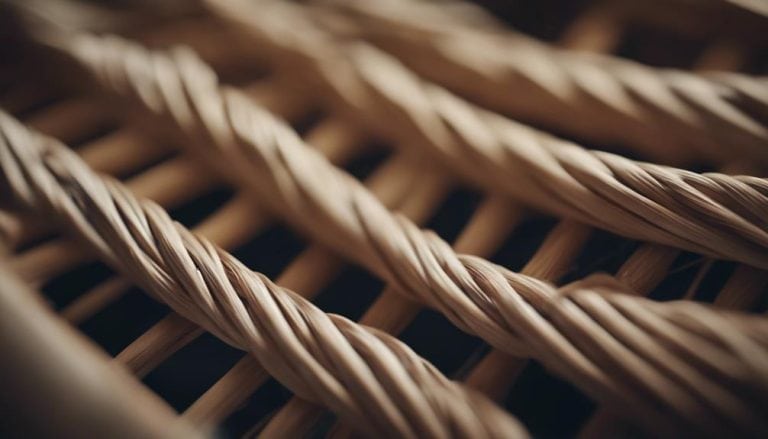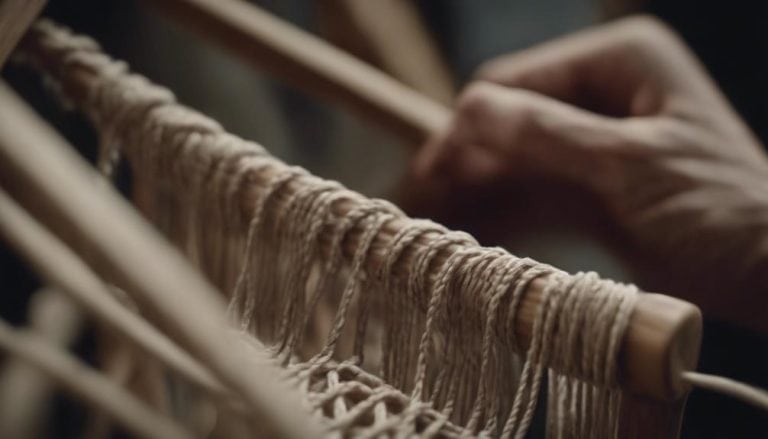Basics of Danish Cord Weaving Techniques
By coincidence, I stumbled upon the intricate world of Danish cord-weaving techniques. The precision required in mastering the cow-hitch knot and understanding the role of double rails in creating flawless seating arrangements piqued my curiosity.
As I began exploring the fundamentals, this traditional craft’s artistry and attention to detail became apparent. Join me as we unravel the intricacies of Danish cord weaving and discover the secrets behind creating beautifully woven pieces that stand the test of time.
Danish Cord weaving techniques are fundamental in traditional furniture making, wrapping cords around frames for strength and aesthetics. Understanding these basics is crucial for mastering this craft.
Key Takeaways
- Danish cord weaving combines functionality with elegance, reflecting expert craftsmanship.
- The technique utilizes durable twisted paper cords in intricate patterns for timeless style.
- Danish cord weaving enhances furniture longevity, providing comfort, flexibility, and structural support.
- Attention to detail in weaving techniques results in aesthetically appealing and durable furniture designs.
History of Danish Cord Weaving
Originating in the early 20th century in Denmark, Danish cord weaving revolutionized furniture craftsmanship with its unmatched durability, comfort, and timeless aesthetic appeal. The origins of Danish cord weaving can be traced back to when traditional handcrafting techniques were highly valued.
Evolution in furniture design led to using twisted paper cords woven in intricate patterns to create sturdy and visually appealing chair seats and backs. This weaving method quickly gained popularity for its ability to combine functionality with elegance, setting it apart from other materials commonly used at the time.
The evolution of Danish cord weaving reflects a dedication to preserving traditional methods while adapting to modern design trends. Today, this technique remains a symbol of timeless style and expert craftsmanship, offering furniture pieces that stand the test of time and exude a sense of unrivaled sophistication and comfort.
Tools Required for Weaving

When embarking on Danish cord weaving, essential tools such as a weaving needle, scissors, a wood block for tightening, and a hammer for tacking are indispensable for achieving precision and maintaining the integrity of the weave. The weaving needle is crucial in guiding the cord through tight spaces with finesse, ensuring each strand aligns perfectly without snagging or tangling.
It allows for intricate patterns to be woven seamlessly, contributing to the overall quality of the final piece. Scissors are vital for cutting the cord to the required length and neatly trimming any excess after weaving, giving the project a polished and professional finish.
Moreover, the wood block is a reliable companion in the process, helping to keep the cord tension consistent across the weave. By pressing the cord against the wood block while working on the front rail, we can ensure that the tension remains even throughout, resulting in a uniform and visually appealing outcome.
Lastly, the hammer plays its part by securely tacking the cord to the rails, providing stability and strength to the structure as the weaving progresses. Each tool plays a unique role in maintaining the integrity of the weave, showcasing the importance of attention to detail and expertise in Danish cord weaving.
Types of Danish Cord Materials
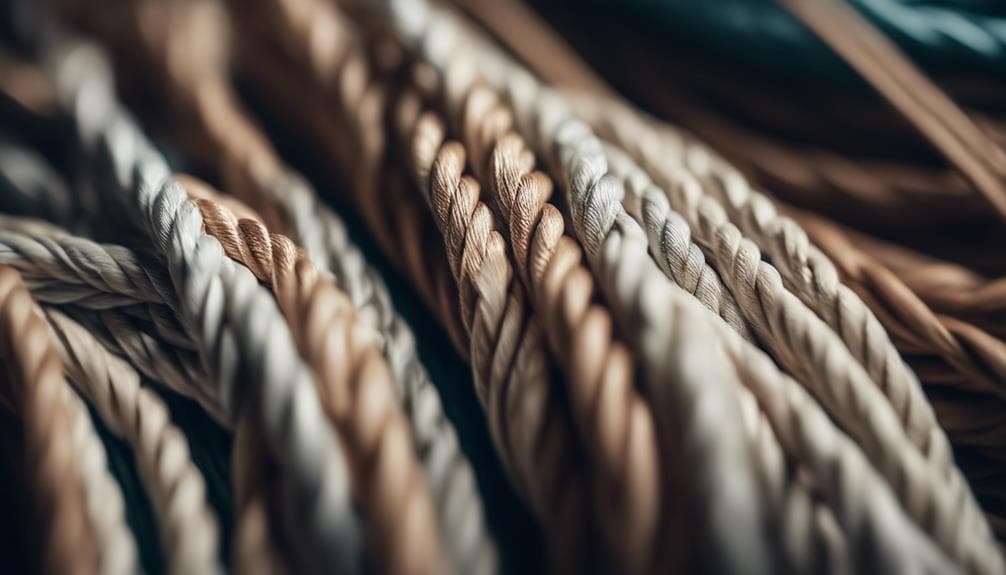
In Danish cord weaving, the choice of materials is paramount, with Danish rope cord being a standout option due to its quality and versatility in re-weaving projects. Danish rope cord is typically made from treated paper twisted into a three-ply rope. There are two types of Danish rope cord: laced and unlaced, both measuring 1/8 inch in diameter.
This cord is usually sold by the pound, with approximately 180 feet per pound. Chairs often require around 2 pounds of Danish rope cord for re-weaving. Understanding the original chair’s details is crucial for accurately re-weaving with Danish rope cord.
- Cord colors: The Danish rope cord comes in various colors, allowing customization to match different chair styles.
- Maintenance: Proper care and periodic cleaning are essential to maintain the cord’s integrity over time.
- Weaving patterns: Different weaving patterns can be achieved using a Danish rope cord, adding a unique touch to each project.
- Customization: The Danish rope cord allows for creative designs and personalized touches, enhancing the overall aesthetic of the re-weaving project.
- Durability: The Danish rope cord is known for its durability, ensuring longevity in re-weaving projects when properly maintained.
Basic Weaving Techniques

Executing the basic weaving techniques for the Danish cord involves intricately intertwining the twisted paper cord in a serpentine pattern to achieve a consistent and secure weave. Tension control is fundamental; maintaining an even tension throughout the weaving process ensures a neat and professional finish.
Delicately balancing the spacing between the spokes and wraps is essential for a well-balanced weave, preventing any irregularities in the pattern. As one gains proficiency, exploring advanced patterns and pattern variations can add a touch of creativity to the traditional weaving process.
Troubleshooting techniques become valuable skills, allowing for adjustments and corrections if unexpected challenges arise during the weaving. Mastering these basic weaving techniques lays a solid foundation for creating stunning Danish cord woven seats with precision and expertise, embodying the artistry and craftsmanship inherent in this traditional weaving method.
Finishing and Maintenance Tips

To ensure the Danish cord weave’s longevity and pristine appearance, meticulous attention to finishing and maintenance is paramount, reflecting the dedication to preserving the craftsmanship and artistry of this traditional weaving technique.
- Cord trimming and securing: Trim any excess cord neatly and secure the loose end with glue or a knot to maintain a tidy finish.
- Proper weave maintenance: Ensure adequate crossover and spacing on the front and back rails for a neat appearance and enhanced durability.
- Strategic nail placement: Double up on nails strategically to prevent overcrowding and maintain even spacing throughout the weave.
- Neat end tucking: Tuck the loose end of the cord under the woven rows neatly to secure the weave and prevent unraveling.
- Glue drying time: Allow the glue to dry completely before using the chair to ensure the weaving is securely in place for long-lasting use.
Common Mistakes to Avoid
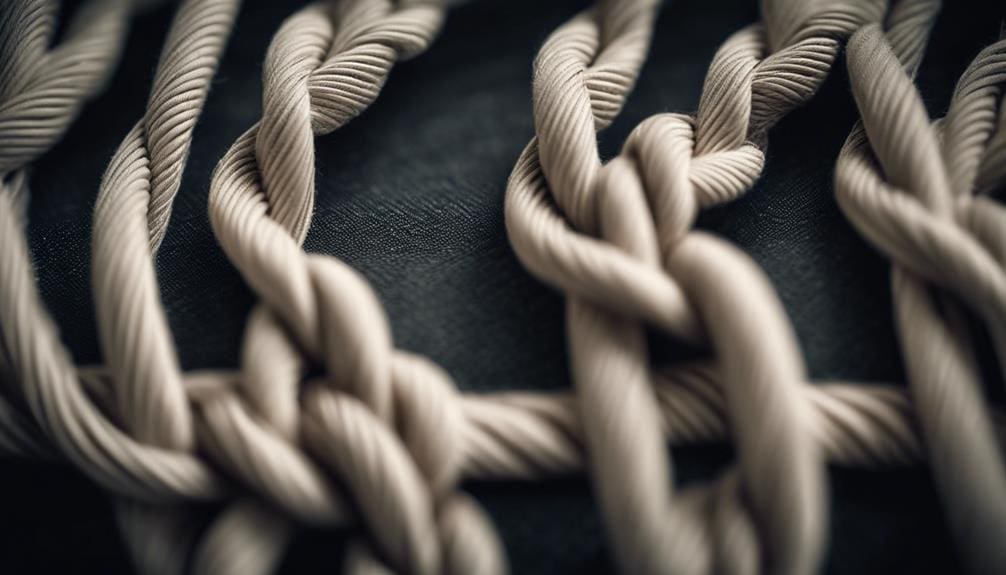
Meticulous attention to detail is crucial in avoiding common mistakes when practicing Danish cord weaving techniques, ensuring the preservation of traditional methods and expertise in this intricate craft. To prevent distortion, it’s important to avoid wrapping the cords too tightly, which can alter the weave pattern and affect the piece’s overall appearance.
Consistent spacing between warp cords is essential for a uniform look, maintaining the integrity of the design. When weaving side to side, be mindful of tangled cords that can disrupt the weaving process and lead to irregularities in the final product.
Double-checking nail positioning is key to maintaining proper alignment throughout the weaving process, guaranteeing a neat and precise outcome. Paying close attention to edge weaving is also crucial to prevent bulging or unevenness, ensuring a flawless finish that showcases the skill and dedication put into each Danish cord creation.
| Common Mistakes to Avoid | Tips for Prevention |
|---|---|
| Wrapping too tightly | Maintain even tension |
| Inconsistent spacing | Measure and adjust regularly |
| Tangled cords | Organize and separate cords |
| Incorrect nail positioning | Check alignment periodically |
| Neglecting edge weaving | Focus on evenness and tightness |
Advantages of Danish Cord Weaving
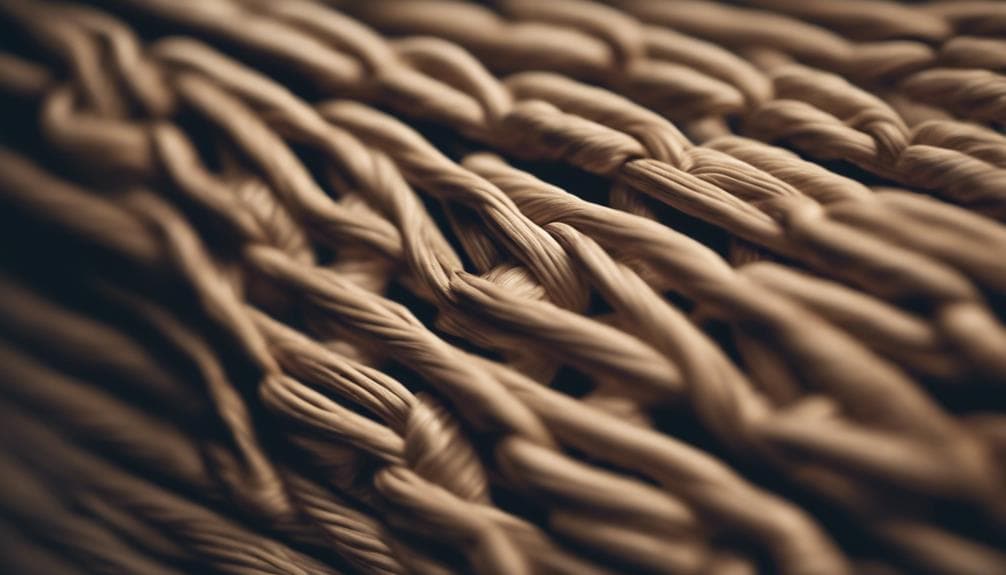
Employing Danish cord weaving techniques in furniture crafting enhances durability, comfort, and aesthetic appeal by using a three-ply twisted paper cord, allowing for intricate designs and a touch of elegance in Scandinavian-inspired pieces. Danish cord weaving offers a variety of advantages that make it a sought-after method in furniture design:
- Durability: Danish cord weaving provides a sturdy and long-lasting seat surface that can withstand regular use without losing its form.
- Comfort: The flexibility of the three-ply twisted paper cord ensures a comfortable sitting experience by conforming to the body’s contours.
- Strength: The tightly woven cord structure enhances the overall strength of the furniture piece, making it robust and reliable.
- Flexibility: Despite its strength, Danish cord weaving retains a level of flexibility that adds to the comfort of the seating surface.
- Aesthetic Appeal: The intricate patterns and clean lines achieved through Danish cord weaving contribute to Scandinavian furniture designs’ timeless and elegant look.
Frequently Asked Questions
What Is the Nail Spacing for Danish Cord Weaving?
I space nails between 7/8 and 1 inch for Danish cord weaving. Consistent spacing ensures a tight, professional weave. Proper nail placement affects tension and appearance. Even spacing is crucial for a structured, uniform finish.
What’s the Difference Between Laced and Unlaced Danish Cord?
Like a dance with intricate steps, laced Danish cord weaves a decorative pattern, while unlaced Danish cord follows a simpler path. Each cord style brings unique charm to furniture re-weaving, requiring attention to detail and expertise.
How Is Danish Paper Cord Made?
Crafting a Danish paper cord involves twisting three paper plies meticulously to form a sturdy rope. This traditional production process ensures durability and detail. Mindfully creating each cord minimizes environmental impact, reflecting a commitment to expertise and sustainability.
What Is the History of Danish Cord Weaving?
Danish cord weaving, with its historical origins in Denmark, showcases intricate traditional techniques passed through generations. The artistry and expertise in creating beautiful patterns using twisted paper cords have made Danish cord weaving a timeless craft.
Conclusion
In conclusion, mastering Danish cord weaving techniques requires attention to detail and dedication to traditional methods. Using the right tools and materials, practicing proper weaving techniques, and avoiding common mistakes, you can achieve a beautifully woven seat that will stand the test of time. Remember, as the saying goes, “practice makes perfect,” – so keep honing your expertise in this craft to create stunning and durable woven pieces.



